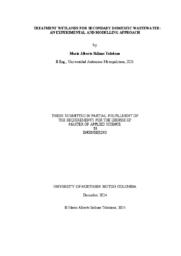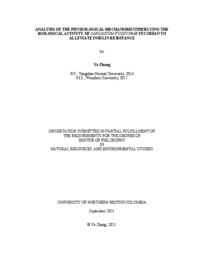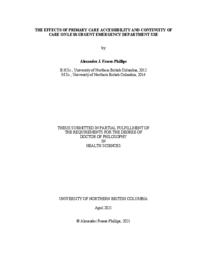Roberts, Deborah
Person Preferred Name
Deborah Roberts
Related Works
Content type
Digital Document
Origin Information
Content type
Digital Document
Origin Information
Content type
Digital Document
Description / Synopsis
Type 2 diabetes mellitus (T2DM) is a chronic metabolic disease characterized by hyperglycemia resulting from progressive loss of β-cell insulin secretion frequently on the background of insulin resistance. T2DM, also known as non-insulin-dependent diabetes, accounts for more than 90% of all cases of diabetes. Insulin resistance (IR) refers to the reduced sensitivity of peripheral tissues to insulin and is one of the important triggers of type 2 diabetes. Sargassum fusiforme polysaccharide exhibits diverse biological activities, and more and more studies have shown it has a significant effect in improving insulin resistance with almost no side effects. Sargassum fusiforme fucoidan (SFF) is one of the main active components with active ingredients such as antioxidants and hypoglycemic lipids. However, the ameliorative effects of SFF on high-fat diet-induced insulin resistance mice and its underlying physiological mechanisms are not clear. Hence, the polysaccharides were extracted and purified from Sargassum fusiforme, and fucoidan (SFF), which has good antioxidant activity, was screened using a drosophila melanogaster aging model. The effect of SFF on the amelioration of insulin resistance in mice was investigated with a high-fat obese insulin resistance mice model. By gut microbiota and metabolomics techniques, the effect of SFF on intestinal metabolites and its mechanism of alleviate IR were investigated. After treatment with 200 mg/kg SFF for 8 weeks, it was found that SFF could reduce body weight, fasting blood glucose and homa-IR in insulin resistance mice. SFF could effectively activate Nrf2/ARE antioxidant signaling pathway in the liver and promote Nrf2 entry into the nucleus and downstream gene transcription. Metabolomics and intestinal microecology revealed that SFF could upregulate TUDCA level and downregulate ceramide level in mice colon and serum, and this change was dependent on gut microbiota. TUDCA effectively inhibits the FXR/SHP signaling pathway activated by a high-fat diet, thereby reducing the biosynthesis of enteric-derived ceramides. In addition, TUDCA in the liver could compete with Nrf2 to bind Keap1 to reduce the formation of the Nrf2/Keap1 complex, reduce Nrf2 ubiquitination, and thus contribute to Nrf2/ARE signaling activation. In conclusion, fucoidan from S. fusiforme was able to modulate gut microbiota, increased the levels of the intestinal metabolite TUDCA, reduced biosynthesis of entericderived ceramides and activated the Nrf2/ARE pathway, which in turn significantly improved insulin resistance induced by high-fat diet in mice. This study provides a new research idea for the study of brown algae fucoidan in metabolic diseases.
Origin Information
Content type
Digital Document
Description / Synopsis
Background/Aims. Since the early 2000s, Canada’s primary care system has undergone substantial reforms, including the incorporation of interdisciplinary teams and strategies to optimise accessibility. However, the effects of primary care accessibility and continuity of care on less-urgent emergency department (ED) use are unclear. Three studies were undertaken to investigate the effects of primary care accessibility and continuity of care factors on less-urgent ED use. Methods. Study One employed a cross-sectional analysis of responses to the Canadian Survey of Experiences with Primary Health Care to predict self-reported ED visit avoidability; Study Two employed a longitudinal time-to-event analysis of responses to Ontario’s Health Care Experience Survey linked with subsequent National Ambulatory Care Reporting System data to predict medically assessed less-urgent ED use; and Study Three employed time-series analyses of presentations to two northern British Columbia EDs following changes in walk-in clinic coverage. Results. Study One (n = 2,625) found no significant associations between self-reported ED visit avoidability and all measures of primary care accessibility and continuity of care. However, rural respondents reported greater ED visit avoidability. Conversely, Study Two (n = 34,686) found that all accessibility factors were significantly associated with medically assessed less-urgent ED use, including the presence of a regular PCP, the regular source of care, and the availability of after-hours care through the PCP. However, time with the same PCP was not associated with medically assessed less-urgent ED use. Rurality was also found to moderate the effect of after-hours care accessibility, with only rural respondents reporting a beneficial effect. Finally, Study Three found that changes in walk-in clinic coverage resulted in short-term impacts on less-urgent ED use, with a walk-in clinic closure resulting in an immediate increase in less-urgent presentations and an opening resulting in an immediate decrease. Conclusions. The findings of Studies Two and Three provide evidence that primary care accessibility factors are associated with medically assessed less-urgent ED use; however, the findings of Study One suggest that these factors do not influence self-perceived ED visit avoidability. Future studies should consider this discordance when measuring the impact of primary care accessibility on less-urgent ED use.
Origin Information




